Ripley Entertainment Inc.'s Blog, page 364
February 3, 2018
CARTOON 02-03-2018
February 2, 2018
Unemployed Dog in Michigan Receives Government Assistance
Featured in Ripley's Believe It or Not!

[January 28-February 3rd, 2018] A spicy opera, unemployed dog, and a bar you literally won’t believe.
Leech Facials
Bloodletting might have gone out of style as a cure-all, but they’re still used today as medical devices and for beauty treatments. This week, our very own Sabrina Sieck had a leech facial done on the season two premiere of our YouTube show Cool Stuff Strange Things. Be sure to check out season one if you haven’t already, and subscribe to stay up to date with the latest and strangest.
Should’ve Gone Before They Left
A Norwegian Air Shuttle flight was carrying 85 plumbers to a trade show in Munich when he had to turn back because of a toilet malfunction. The two-hour flight turned around after just 15 minutes. Apparently, the plumbers were willing to lend a hand until they heard the repair had to be made on the outside of the 30,000-foot high aircraft.
‘Is there a plumber on board?’
A Norwegian flight with 84 plumbers on board turned back to Oslo this weekend because a problem with the toilets.

Leech Therapy is Making a Comeback in the U.S. via Leech Facials of Vomited Blood and Saliva. Just What the Doctor Ordered!
Featured in Ripley's Believe It or Not!

Leeches pack a lot of punch into their slimy segmented bodies. Beyond their unbelievable anatomical stats, they are also amazing little doctors! Leeches have been used in medicine for centuries, first in Egypt about 2,500 year ago and to this day by a small handful of private practitioners.

Way Back When
In ancient Greece and 19th-century Europe, leeches were the predominant medical device for bloodletting, a procedure by which doctors sought to help balance the body’s “humors” by allowing the patient to bleed out for a bit. Bloodletting was thought to treat a variety of conditions, becoming a catchall solution for every possible ailment.
Bloodletting by leech became so popular that, in 1883, French medical professionals imported more than 40 million leeches from Russia for medical purposes!
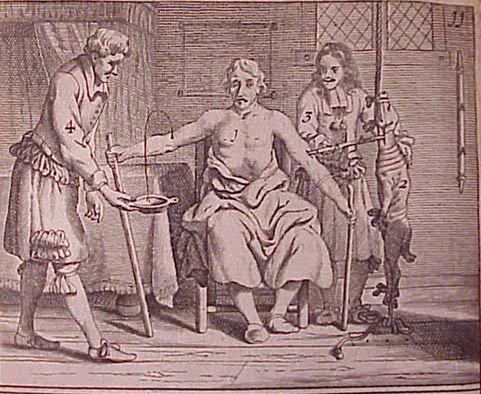
Some of history’s most famous figures—from Cleopatra to Napoleon—also used leech therapy.
Strange sidebar: It is rumored that leeches can be blamed for Napoleon’s loss at the Battle of Waterloo. At the time of the battle, he was suffering from a bad case of hemorrhoids—horseback riding, no thank you. He typically used leeches to relieve his pain in the a**, but when no leeches could be found, his doctor resorted to an opium tincture, leaving little Napoleon down and out!
Sucking into this Century
Believe it or not, leeches are still used today!
In 2004, the FDA approved leeches as medical devices, used to remove blood from congested wounds (good news for hospital staff, leeches used today are farmed, rather than collected!). They are also a secret weapon in the bizarre beauty trend of leech facials, popular with Victoria Secret model Miranda Kerr, who keeps her bloodsuckers as pets in her koi pond after treatment!
Today, as few as five private practice doctors practice leech therapy in the U.S. Dr. Nidia Diaz, founder of Beyond Wellness and world expert in hirudotherapy is one of the select few.
To see Dr. Diaz at work, giving Ripley’s Researcher Sabrina Sieck a leech facial, catch out the latest episode of Ripley’s Cool Stuff Strange Things on YouTube. From blood to it peeing on our host twice, this episode is not for the faint of heart!
CARTOON 02-02-2018
February 1, 2018
A Super Bowl Showdown: Pat the Patriot vs. Swoop the Eagle! Which Mascot Would Win?
Featured in Ripley's Believe It or Not!

While two teams will champion their mascots in trial by football this weekend, we wanted to know the literal answer to the match-up. Who would win a mascot battle between a patriot from New England and an Eagle from Philadelphia?
The Patriot
The New England Patriots mascot is Pat the Patriot. His original iteration, designed by cartoonist Phil Bissell in 1960, is based on a Revolutionary War fighter. Originally, he wore a continental army uniform complete with a tri-corner hat. The average Continental Army soldier stood 5 feet 8 inches tall and weighed 143 pounds—nothing compared to a modern NFL lineman. Despite inferior equipment, training and support, the Continental Army was able to win independence for America, demonstrating strength and military prowess.

Old Patriot design.
The modern patriot mascot has what’s called a “flying Elvis” design. He was intended to represent Paul Revere, but Patriots fans voted to keep Pat. According to his official biography on the Patriots’ website, Pat was born on July 4, 1776, making him 242 years old. Despite his age, his height is listed as “head and shoulders above the competition” with a weight entry of “100% muscle.”

The Eagle
Swoop, the Philadelphia Eagles’ mascot, represents the American bald eagle. Bald eagles weigh up to 14 pounds with wingspans extending 6-7.5 feet wide. With those wings, they can fly up to 100 mph while diving, a feat they use to catch fish and small game. Though they can typically only carry off animals weighing three to four pounds, bald eagles have been observed catching larger fish with their sharp talons and towing them to shore.

According to his origin story—depicted in a cartoon on the Eagle’s website—Swoop was a weakened and blind fledgling from Neshaminy State Park. The football team took him in and bestowed him with a jersey that magically transformed the feeble bird into a 6-foot 3-inch, 216-pound anthropomorphized bird-man.

Swoop
The Match-Up
Setting this battle on a football field seems only appropriate, and we’ll be giving each competitor their game day outfits.
Pat’s “head and shoulders” height makes him stand at least 7-feet tall. His immense strength outmatches the hollow-boned Swoop. Unfortunately for Swoop, his magical jersey seems to take away his deadly talons, transforming them into sneaker-able feet.

For us, the match comes down to lethality and mobility, two areas in which Swoop dominates. The jersey may have taken away his talons, but it has not hampered his ability to fly—a feat Swoop has demonstrated in his origin comic and during games.
In a strength versus speed battle, victory will all come down to tactics. Swoop would likely try to dive-bomb Pat, using his beak as a weapon. Pat would have to avoid a fatal strike and grab the bird to inflict maximum damage. Eagles rarely use their beaks offensively, but they can tear through flesh with ease. Pat may have greater strength and experience, but grabbing the bird-man would put him face to face with that deadly beak.
K.O.
We think Swoop has the advantage in a no-holds-barred fight thanks to his ability to fly and his beak’s potential as a deadly weapon. The teams, however, have opted instead to settle things with a friendly game of football.
Who do you think would win?
Source: A Super Bowl Showdown: Pat the Patriot vs. Swoop the Eagle! Which Mascot Would Win?
Dead Men Tell No Tales, We Tell True Tales. Planks and Buried Treasure Were Bogus!
Featured in Ripley's Believe It or Not!

Or Not
In today’s world many misconceptions have been perpetuated—becoming modern day “facts”—when, in reality, myths and hearsay have taken over. Sorry to burst your bubble, but in this weekly column, Ripley’s puts those delusions to the test, turning your world upside down, because you can’t always…Believe It!
Today
: Planks and Buried Loot are from Lit
Pirates have troubled sea travelers for many centuries, but there was one brief time in history—the Golden Age of Piracy—when pirates actually controlled them. From 1650 to 1730, fleets of pirate ships wreaked havoc around the Mediterranean Sea, across the Atlantic, in the China Sea and the Bay of Bengal, and throughout the Caribbean. Legend and lore grew from this period and, today, tales of walking the plank and buried treasure still remain.
They are just that. Tales. Tall tales.
“X” Marks the Spot
Buccaneers burying their treasure was rare. In fact, history regales only a couple of accounts of pirates doing so. Most notable: Captain William Kidd.
In 1699, privateer-turned-pirate Kidd dropped anchor near Long Island, New York, to bury his wealth of gold and jewels—the modern equivalent of millions of dollars—quickly before setting sail for New York City. A wanted man for plundering in the Indian Ocean, he was soon arrested. His buried treasure was tracked down and confiscated by authorities. Kidd, meanwhile, was transported to London for execution.

While every pirate dreamed of treasure chests filled with gold and jewels, sugar and tobacco shipped from the Americas to Europe were also popular booty—they could be sold for a king’s ransom.
This idea of buried treasure and maps marked with an “X” seems to have come from Robert Louis Stevenson’s famous novel, Treasure Island, published in 1883.
Walk the Plank
Blindfolded victims forced to walk a narrow beam to their death is also the stuff of fairy tales. There is no proof that pirates ever made captives walk the plank.

From Howard Pyle’s Book of Pirates: Fiction, Fact & Fancy Concerning the Buccaneers & Marooners of the Spanish Main, 1921.
Pointing a finger back at literature, Robinson Crusoe author Daniel Defoe was the first to make his characters walk the plank in his 1724 book, A General History of the Pyrates. Later writers, including Stevenson, elaborated on Defoe’s depiction and cemented the plank in pirate “history.”
Much more unpleasant than dropping to doom, pirates had a nasty array of punishments they used against traitors, unpopular captains and any poor prisoners they captured.
Keel Hauling – The unfortunate victim was tied to a rope and dragged the length of the boat along the keel, from front to back. Apart from the high chance of drowning, his body would be ripped to shreds by the many rough shells attached to the keel.
Marooning – Prisoners and pirates were sometimes simply left on a deserted island, perhaps with a bottle of rum for company.
Cat–O’–Nine–Tails – This was a whip with nine leather strips that were knotted with pieces of metal at the end. A severe whipping with one of these instruments of torture could be enough to kill a person.
More Lost Riches
Although planks are poppycock and buried treasure was a rarity, legends live on about long lost riches hidden away, just waiting for treasure hunters to track them down! From D.B. Cooper to the Amber Room, these historical heists have little chance of ever being found.
Source: Dead Men Tell No Tales, We Tell True Tales. Planks and Buried Treasure Were Bogus!
CARTOON 02-01-2018
January 31, 2018
The Giant Mansion Built for Ghosts: The Winchester Mystery House
Featured in Ripley's Believe It or Not!

For 38 years, Sarah Winchester dedicated her life to building the Winchester Mystery House, a labyrinth of stairways, windows, and trap doors.
Stairs end abruptly at the ceilings, doors open onto brick walls, and glittered stained glass windows are adorned with spider web designs. Legend says she built the house to appease the many spirits haunting her.
History
It all started in the town of New Haven, Connecticut, where Sarah Lockwood Pardee was born. Coming from an affluent middle-class family, Sarah was a child prodigy. By the age of 12, she was fluent in French, Italian, Latin, and Spanish. She was recognized for her knowledge of literature and refined musical skills and ultimately dubbed the “Belle of New Haven.”
This undoubtedly unique girl married to William Winchester. The Winchester family amassed a vast fortune running the Winchester Repeating Arms Company where they developed the 1860 Henry Rifle, better known as “The Gun that Won the West.”
During their marriage, Sarah gave birth to a daughter, Annie, who unfortunately passed away from marasmus in July of 1866. Her daughter’s death drove Sarah to the edge of madness. It would take a decade for Sarah to overcome her loss. During this dark time, William was struck with pulmonary tuberculosis, a disease that ended his life. As a result of his death, Sarah inherited 20 million dollars, making her one of the richest women in the world. She took her wealth and began building the Winchester Mystery House.
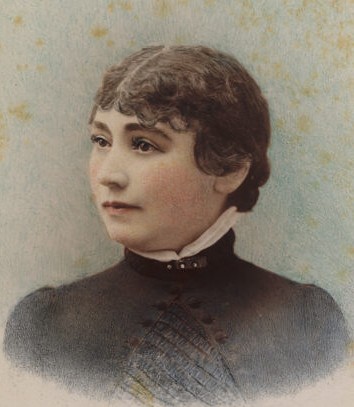
Sarah Winchester
The Winchester Mystery House Folklore
Unsure of how to deal with her loss, Sarah fell under the influence of a medium who told her she was cursed. She would need to build a home for spirits who died from the Winchester rifle. If she didn’t continuously build the home, she would die. To her luck, Sarah found a six-room home under construction in San Jose, California. Over the years, she would add 200 rooms to the house.
The ever-constant construction of the Winchester Mystery House landed Sarah twenty carpenters who rotated shifts. They labored 24-hours per day, seven days a week. The house was once seven stories high, but a 1906 earthquake reduced the house to four stories. According to some accounts, Sarah held séances every night at midnight so the spirits could tell her what to build next.
Other than the outlandish size of the house, what makes it so unique is the maze-like corridors and doors that lead to nowhere. Some doors lead to dead ends that might leave you hanging off precipices without railings. There are rooms within rooms and little doors that open up to wide spaces. She also created shortcuts that lead you in circles or quickly take you to the other side of the house.

The door that leads to nowhere. CC Spiel
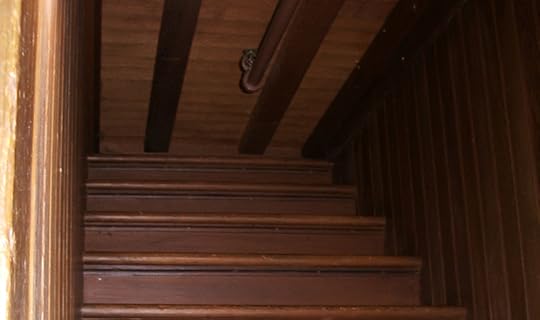
That’s a dead end. CC InSapphoWeTrust
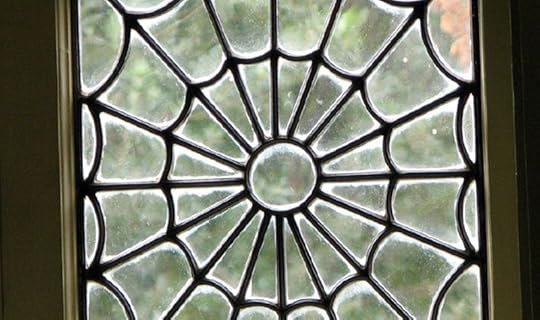
Spider Web Window CC Jean via flickr
You can find prime numbers throughout the mansion. The most prominent number being 13. She had a chandelier reworked to hold 13 candles instead of 12. There are 13 sink drains, various sets of 13 wall hooks installed within the home, and 13 bathrooms.
Sarah had multiple master bedrooms built. Supposedly, she slept in a different one every night so the spirits couldn’t find her.
Sarah passed away of heart failure at the age of 83 on September 5, 1922. She left a will written in 13 sections and was signed 13 times. The Winchester Mystery House was auctioned immediately and soon became an attraction five months after her death.

Sarah wore a black veil every day and dismissed servants or workers who saw her face.
Winchester By the Numbers
161 rooms
24,000 square feet
6+ acres
2,000 doors
10,000 windows
47 fireplaces
40 stairways
13 bathrooms
6 kitchens
3 elevators
2 basements
Source: The Giant Mansion Built for Ghosts: The Winchester Mystery House
CARTOON 01-31-2018
January 30, 2018
The San Francisco House Filled with 33,000 Tabs of LSD
Featured in Ripley's Believe It or Not!

Mark McCloud’s San Francisco home is filled with tens of thousands of LSD tabs known as blotters. Blotters are sheets of paper that have either been soaked in LSD or had the psychedelic dripped onto them.

10 doses on perforated blotter paper.
Acid may have been invented in the 1930s, but it was the 1960s-counterculture movement that ingrained the drug into human culture. While the CIA and Army tried to use LSD to control minds and neutralize enemy combatants, the drug saw use by medical and psychiatric professionals in the treatment of addiction and PTSD.
On October 6, 1966—called the Day of the Beast in the psychedelic community—California banned the possession of LSD, and the Federal government followed two years later. Since then, almost the entire Western world has banned the substance.

Blotter art honoring Albert Hofmann, the scientist who discovered LSD.
Despite multiple raids by the DEA, McCloud has managed to stay out of jail for one reason: the acid on his tabs is expired. LSD breaks down quickly in the presence of light and heat, and McCloud’s tabs are too old to give anyone ingesting them a trip. Instead, he keeps the tabs for their artwork.
Institute of Illegal Images

Blotter art helps identify the small crystals on the paper and is often perforated to measure dosage, but Mark says it also adds excitement to the experience, comparing it to the impression of religious symbols on the host in Catholicism.

Communion wafers with imprints.
McCloud began collecting early on but found that he kept eating them. Eventually, he framed the sheets.
“It kept me from eating it if it was framed on the wall.”
He kept collecting and quickly became an expert on the short history of acid. He explains that the art is two-fold. You have the graphic, but also the art it represented when people ingested the LSD.

The Blotterbarn
Today, his house is a museum, open free for people to come in and see. Though he does get the occasional DEA agent coming in, posing as a visitor, most people find the art fascinating.
“The greatest thrill is when a family comes in and it’s the first time they’ve gotten to talk about drugs without stress.”
People who come into the museum often recognize some of the tabs themselves and have visible flashbacks of trips they’ve had.

In spite of constant badgering from federal law enforcement, McCloud says his local community has been fantastic. His neighbors don’t seem to mind having a blotter-filled house next door, and he even trades visitors with the museum across the street. His motto is to kill them with kindness, and insists being polite has been the secret to his success. He believes LSD will one day be recognized for its benefits, seeing himself as a historian during the “dark period.”








Source: The San Francisco House Filled with 33,000 Tabs of LSD
Ripley Entertainment Inc.'s Blog
- Ripley Entertainment Inc.'s profile
- 52 followers


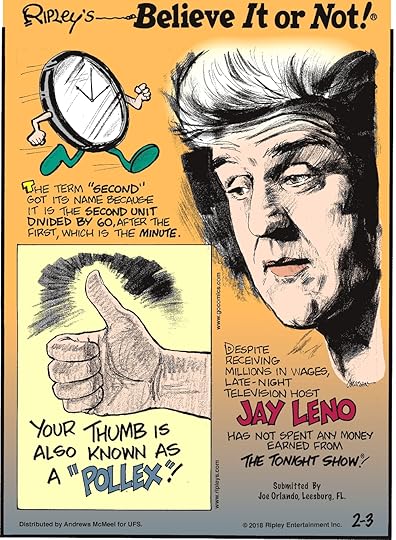 CARTOON 02-03-2018
CARTOON 02-03-2018



